Introduction
High-return investments are powerful tools for building wealth in today’s ever-changing financial world. These investment options have the potential to generate significant returns, attracting investors who want to maximize their financial growth by strategically participating in the market.
Table of Contents
To create a successful investment strategy, you need a deep understanding of various high-yield options and the risks that come with them. In this guide, you’ll learn how to:
- Identify promising investment opportunities across different asset classes
- Evaluate potential returns against risk factors
- Build a diversified portfolio aligned with your financial goals
This comprehensive guide explores three key high-return investment categories:
- Dividend-yielding stocks – Companies that share profits through regular dividend payments
- High-performing ETFs – Exchange-traded funds combining growth potential with diversification
- Strategic index funds – Low-cost investment vehicles tracking market performance
The investment landscape of 2023 presents unique opportunities for both novice and experienced investors. By understanding these investment options, you can make informed decisions to optimize your portfolio’s performance while keeping a balanced risk profile.
1. Understanding High-Return Investments
High-return investments are financial assets designed to generate substantial profits above market averages, typically yielding returns of 15% or higher annually. These investments attract ambitious investors seeking to accelerate wealth creation through strategic portfolio allocation.
Key Factors Driving High Returns:
- Market Volatility
- Economic Cycles
- Industry Growth Rates
- Company Performance
- Risk Tolerance Levels
The potential for high returns varies across different asset classes, influenced by specific market dynamics and risk factors:
Growth Stocks
- Technology companies with rapid expansion
- Emerging market leaders
- Innovative startups with disruptive potential
Real Estate Investment Trusts (REITs)
- Commercial property portfolios
- Healthcare facilities
- Data centers
Cryptocurrency
- Bitcoin and major altcoins
- Blockchain technology investments
- Decentralized finance protocols
Risk Profiles Across Sectors:
- Technology SectorRisk Level: High
- Return Potential: 20-30% annually
- Key Feature: Rapid innovation cycles
- Healthcare IndustryRisk Level: Moderate
- Return Potential: 15-25% annually
- Key Feature: Demographic trends
- Energy SectorRisk Level: Moderate to High
- Return Potential: 18-28% annually
- Key Feature: Commodity price sensitivity
Understanding the relationship between risk and return helps investors make informed decisions. High-return investments often require:
- Longer holding periods
- Higher risk tolerance
- Regular portfolio monitoring
- Strategic diversification
- Market timing awareness
These investments demand careful analysis of market conditions, company fundamentals, and sector trends to maximize potential returns while managing associated risks effectively.
2. Exploring Stocks with Highest Dividend Yield
Dividend yield represents the annual dividend payment divided by a stock’s current price, expressed as a percentage. This metric helps investors gauge potential income returns from their stock investments. A high dividend yield can signal attractive income opportunities, but it requires careful analysis to ensure sustainability.
Identifying High-Yield Dividend Stocks
Several key criteria help identify promising dividend stocks:
- Payout Ratio: Look for ratios below 75%, indicating the company can sustain dividend payments
- Earnings Growth: Consistent year-over-year earnings growth supports future dividend payments
- Industry Position: Market leaders often maintain stable dividend payments
- Financial Health: Strong balance sheets and cash flows indicate reliability
- Historical Performance: Companies with consistent dividend increases demonstrate commitment
Current High-Yield Dividend Sectors
The following sectors traditionally offer higher dividend yields:
- Utilities: Companies like Duke Energy (4-5% yield)
- Real Estate Investment Trusts (REITs): Digital Realty Trust (5-6% yield)
- Telecommunications: AT&T (6-7% yield)
- Energy: Enterprise Products Partners (7-8% yield)
Benefits and Risks of Investing in Dividend Stocks
Benefits:
- Passive income generation
- Lower volatility compared to growth stocks
- Tax advantages in certain jurisdictions
- Protection against inflation
- Compound growth through dividend reinvestment
Risk Factors:
- Dividend cuts during economic downturns
- Interest rate sensitivity
- Limited growth potential
- Sector concentration risk
- Tax implications on dividend income
Portfolio Integration Strategies
A balanced approach to dividend investing includes:
- Diversification across multiple sectors
- Position sizing based on yield and risk levels
- Regular monitoring of company fundamentals
- Reinvestment plans for compound growth
- Risk management through stop-loss orders
Companies with sustainable high yields often demonstrate strong market positions, reliable cash flows, and disciplined management teams. These characteristics help maintain dividend payments through various market cycles, providing investors with steady income streams.
3. ETFs with Highest Dividend Yield
Exchange-Traded Funds (ETFs) combine the best features of stocks and mutual funds, offering instant diversification with the flexibility to trade throughout the day. These investment vehicles have gained significant traction among retail investors seeking steady income streams through dividend payments.
Current Top-Performing Dividend ETFs
Here are some of the current top-performing dividend ETFs:
- Vanguard High Dividend Yield ETF (VYM): This ETF has a yield of 3.2% and an expense ratio of 0.06%. It focuses on large-cap value stocks that consistently pay dividends.
- SPDR S&P Dividend ETF (SDY): With a yield of 2.8% and an expense ratio of 0.35%, this ETF targets companies that have increased their dividends for 20 or more consecutive years.
- iShares Select Dividend ETF (DVY): This ETF offers a yield of 3.9% with an expense ratio of 0.38%. It provides broad market exposure while placing emphasis on dividend quality.
Evaluating Dividend ETFs: Key Metrics to Consider
When evaluating dividend ETFs, here are some key metrics you should consider:
Yield Analysis
- Current dividend yield
- 5-year dividend growth rate
- Payout consistency
- Sector diversification
Cost Considerations
- Expense ratios impact long-term returns
- Trading costs and bid-ask spreads
- Tax efficiency
Risk Assessment
- Historical volatility
- Geographic concentration
- Sector allocation
- Market capitalization distribution
Selection Strategy for Dividend ETFs
To select the right dividend ETFs for your portfolio, you can follow this selection strategy:
- Define Your Investment Goals
- Income requirements
- Growth expectations
- Risk tolerance levels
- Analyze Fund Components
- Holdings breakdown
- Sector weightings
- Geographic exposure
- Review Performance Metrics
- Historical returns
- Tracking error
- Dividend growth patterns
- Consider Market Conditions
- Interest rate environment
- Economic cycle position
- Industry trends
A balanced approach to dividend ETF selection involves weighing yield potential against risk factors and cost structures. High-yield ETFs might offer attractive income streams but could expose investors to greater volatility. Lower-yielding options may provide stability but require careful consideration of other factors such as growth prospects and market conditions.
High Return Index Funds to Watch
Index funds represent a passive investment approach that mirrors specific market indices like the S&P 500 or NASDAQ 100. These investment vehicles allow you to gain exposure to hundreds or thousands of stocks through a single purchase, creating an efficient way to participate in market growth.
Top-Performing Index Funds in 2023
1. Fidelity ZERO Large Cap Index (FNILX)
- 0% expense ratio – a rare find in the investment world
- Tracks the Fidelity U.S. Large Cap Index
- 5-year annualized return: 14.8%
- Ideal for cost-conscious investors seeking broad market exposure
2. Vanguard S&P 500 ETF (VOO)
- Ultra-low expense ratio of 0.03%
- Direct tracking of the S&P 500
- 5-year annualized return: 14.7%
- Known for high liquidity and trading flexibility
3. Invesco QQQ Trust ETF (QQQ)
- Focuses on innovative Nasdaq-100 companies
- 5-year annualized return: 20.2%
- Higher growth potential through tech sector exposure
- Popular choice for growth-oriented investors
- A great example of an ETF, which is a type of index fund that can provide similar benefits.
Advantages and Considerations When Investing in Index Funds
1. Built-in Diversification Benefits
- Automatic exposure to multiple sectors and companies
- Reduced impact of single-stock volatility
- Natural protection against company-specific risks
- Market-wide representation in a single investment
2. Cost-Effective Investment Structure
- Lower expense ratios than actively managed funds
- Minimal transaction costs due to low turnover
- No management fees for stock selection
- Greater portion of returns stays in your pocket
3. Key Investment Considerations
- Match the index fund to your investment goals
- Consider the tracking error of the fund
- Evaluate the fund’s assets under management
- Check the tax efficiency of the fund structure
Index funds shine as long-term wealth-building tools, offering a balance of growth potential and risk management. You’ll benefit from professional management of a diversified portfolio without the high costs associated with active trading. These investment vehicles prove particularly valuable for investors seeking steady, market-matching returns.
For those interested in exploring further, consider delving into resources like this investor guide to ETFs which can provide deeper insights into these financial instruments.
Comparative Analysis: Returns on Investment for Different Programs
Investment returns can vary greatly depending on the type of investment you choose. By looking at past performance, we can identify patterns that may be helpful in shaping your portfolio strategy. For a deeper understanding of how to calculate your portfolio’s investment returns and performance, you might find this guide useful.

Historical Performance Comparison (5-Year Average Returns)
- Index Funds (S&P 500 tracking): 14.7%
- Dividend-focused ETFs: 10-12%
- High-yield dividend stocks: 8-15%
The relationship between risk and return is quite different for each of these investment options. Index funds tend to perform consistently with the market while also being less volatile. ETFs strike a balance by incorporating both passive and active management techniques.
Key Performance Factors to Consider:
1. Time Horizon Impact
- Short-term (1-3 years): ETFs show higher liquidity
- Medium-term (3-7 years): Index funds display steady growth
- Long-term (7+ years): Dividend stocks compound returns effectively
2. Volatility Profiles
Understanding the most misunderstood investing concepts related to risk and volatility can also aid in making informed decisions:
- Index Funds: Lower volatility due to broad market exposure
- ETFs: Moderate volatility depending on sector focus
- Individual Stocks: Higher volatility with potential for larger gains/losses
Cost Comparison
Investment Type Average Expense Ratio Index Funds | 0.03-0.10% |
ETFs | 0.15-0.50% |
Dividend Stocks | Trading commissions only |
Real-world performance data shows index funds like FNILX delivering consistent returns with minimal fees. The Invesco QQQ Trust ETF demonstrates higher returns potential with increased sector-specific risk. High-yield dividend stocks present opportunities for both appreciation and income generation, though they require more active management.
Your investment timeline plays a crucial role in determining optimal allocation. Shorter time horizons benefit from the liquidity of ETFs, while longer periods allow index funds to maximize compound growth potential. Market conditions and economic cycles influence each investment type differently, creating opportunities for strategic portfolio adjustments as seen in this trust-level review. Additionally, considering investment plans could provide further insights into structuring your portfolio effectively.
Conclusion: Building Your Portfolio with High-Return Investments Strategies
Building a strong investment portfolio requires thorough research and strategic diversification. Your success as an investor depends on having a balanced mix of high-return options while also managing potential risks.
Consider these proven strategies for optimizing your portfolio:
- Research-Based Selection
- Study historical performance data
- Analyze market trends and economic indicators
- Review fund manager track records
- Examine expense ratios and fee structures
- Strategic Asset Allocation
- Spread investments across multiple sectors
- Mix growth stocks with dividend-paying options
- Balance domestic and international exposure
- Include both passive and active investment vehicles
- Risk Management Practices
- Set clear investment goals and timelines
- Implement stop-loss orders
- Regularly rebalance your portfolio
- Monitor market conditions
A disciplined approach to high-return investing requires patience and consistency. Market volatility creates opportunities for strategic investors who stay committed during different market cycles. Your investment strategy should align with your risk tolerance and financial goals while also taking advantage of the benefits of compound returns.
Remember: successful high-return investing combines thorough research, strategic diversification, and unwavering discipline. These elements work together to build a resilient portfolio that can withstand market fluctuations while aiming for significant long-term returns.
FAQs (Frequently Asked Questions)
What are high-return investments?
High-return investments refer to asset classes that offer substantial profits compared to traditional investment options. They appeal to investors seeking significant financial growth, and understanding the factors influencing potential returns is crucial for making informed investment decisions.
How can I identify stocks with the highest dividend yield?
To identify stocks with the highest dividend yield, investors should consider criteria such as the company’s financial health, historical dividend payments, and market conditions. Dividend yield is a key measure of an investor’s income from holding a stock, making it important for those looking for steady income.
What are the benefits of investing in dividend stocks?
Investing in dividend stocks offers several advantages, including a steady income stream during market downturns and the potential for capital appreciation. They can provide a reliable source of cash flow while also allowing investors to benefit from long-term price increases.
What should I look for when selecting dividend ETFs?
When selecting dividend ETFs, it’s essential to assess key metrics such as yield potential, expense ratios, and liquidity. Understanding how these factors align with your investment goals and risk tolerance will help you choose suitable ETFs that can enhance your portfolio.
Why are index funds considered a low-risk investment option?
Index funds are considered low-risk because they offer automatic diversification across multiple stocks within a specific market index. This reduces company-specific risks and typically comes with lower expense ratios compared to actively managed mutual funds, making them an attractive option for long-term investors.
How can I effectively build a portfolio with high-return investments?
Building a portfolio with high-return investments involves utilizing research-based approaches to select options while ensuring diversification across different asset classes. Maintaining discipline throughout market cycles is essential for achieving long-term financial success through strategic investing.





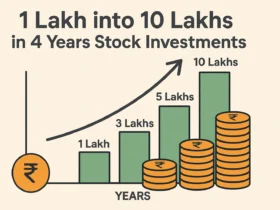


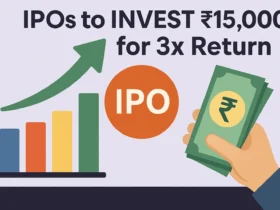

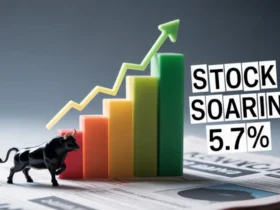









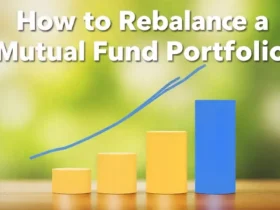
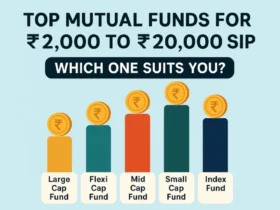




2 Comments